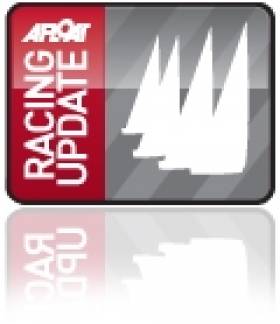Displaying items by tag: Chris Allen
#irishmoth – In another first for Irish sailing, a Bray, County Wicklow design and build of one of the world's leading edge dinghy types will make its debut on Saturday at the BMW Frank Keane Royal St. George Yacht Club regatta on Dublin Bay. Pioneering International Moth Sailor John Chambers will compete in the new foiling hull, from the design board of Chris Allen, against a burgeoning 12–boat Irish fleet that has attracted a range of top Irish dinghy sailors to its ranks.
In recent years, the International Moth, a development class, has literally take flight with the advent of lifting hydrofoils on daggerboard and rudder, which lift the entire hull and skipper above the water surface, dramatically reducing drag and increasing speed. Now Ireland is set to play its role in future development.
'It's a displacement hull, so not designed to foil in anything under six knots', says Allen of the new craft, that took its maiden sail at the National Yacht Club on Wednesday.
Top speeds of Moths can be above 30 knots. Last month, a former American Fireball dinghy sailor became the fastest dinghy sailor in the world, clocking up a time 36.5 knots This high speed is reflected in the International Moth's RYA Portsmouth Yardstick of 600, the fastest of any sailing dinghy or multihull.
The key features of the Irish design is that when the breeze is above six knots it will reach its foiling speed more easily than some existing designs. According to Chris, the Irish hull is a progression of existing designs and the hope is that its 'lift speed' will be quicker so the boat 'flies' sooner.
The design also features a new look at foil control systems with a smoother and more direct automatic adjustment.
The new hull is also 'more boat shaped than boxed shape' says Chris, who claims it is is stiffer than rivals because it has more shape, more rocker and rounded in the sides.
Constructed entirely in carbon fibre and weighing under eight kilograms, the boat will compete at the 2014 World Championships at Hayling Island in the UK in a fortnight in a fleet of 140 boats.
Depending on its world championship performance, Chris hopes the new hull called 'Voodoo' will be the first of many international orders.
The cost of the boat is comparable to other production Moths at approximately €12,000, depending on choice of rig and equipment.
























































